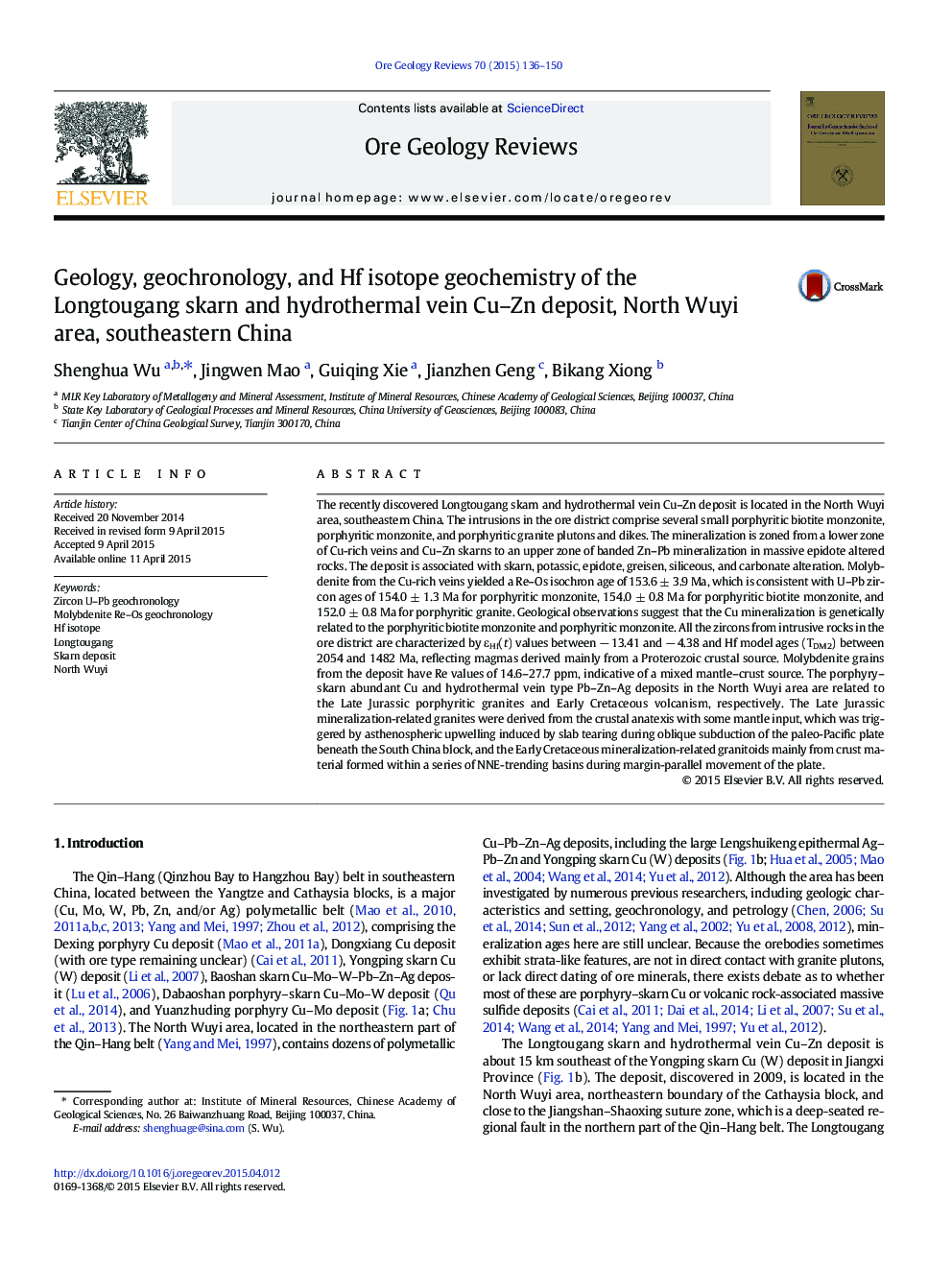| کد مقاله | کد نشریه | سال انتشار | مقاله انگلیسی | نسخه تمام متن |
|---|---|---|---|---|
| 4696972 | 1637234 | 2015 | 15 صفحه PDF | دانلود رایگان |

• Longtougang deposit could be one member of the Cu-rich porphyry–skarn deposits in the Qin–Hang belt.
• Molybdenite Re–Os age of 153.6 Ma corresponds well with the zircon U–Pb ages of 154.0–152.0 Ma for granitoids.
• The Cu porphyry–skarn and hydrothermal vein Pb–Zn–Ag deposits were formed during 160–154 Ma and 139–136 Ma, respectively.
• Granitoids were derived from the remelting crust with input of mantle substances.
• Asthenosphere upwelling was induced by paleo-Pacific subduction beneath the Eurasian continent.
The recently discovered Longtougang skarn and hydrothermal vein Cu–Zn deposit is located in the North Wuyi area, southeastern China. The intrusions in the ore district comprise several small porphyritic biotite monzonite, porphyritic monzonite, and porphyritic granite plutons and dikes. The mineralization is zoned from a lower zone of Cu-rich veins and Cu–Zn skarns to an upper zone of banded Zn–Pb mineralization in massive epidote altered rocks. The deposit is associated with skarn, potassic, epidote, greisen, siliceous, and carbonate alteration. Molybdenite from the Cu-rich veins yielded a Re–Os isochron age of 153.6 ± 3.9 Ma, which is consistent with U–Pb zircon ages of 154.0 ± 1.3 Ma for porphyritic monzonite, 154.0 ± 0.8 Ma for porphyritic biotite monzonite, and 152.0 ± 0.8 Ma for porphyritic granite. Geological observations suggest that the Cu mineralization is genetically related to the porphyritic biotite monzonite and porphyritic monzonite. All the zircons from intrusive rocks in the ore district are characterized by εHf(t) values between − 13.41 and − 4.38 and Hf model ages (TDM2) between 2054 and 1482 Ma, reflecting magmas derived mainly from a Proterozoic crustal source. Molybdenite grains from the deposit have Re values of 14.6–27.7 ppm, indicative of a mixed mantle–crust source. The porphyry–skarn abundant Cu and hydrothermal vein type Pb–Zn–Ag deposits in the North Wuyi area are related to the Late Jurassic porphyritic granites and Early Cretaceous volcanism, respectively. The Late Jurassic mineralization-related granites were derived from the crustal anatexis with some mantle input, which was triggered by asthenospheric upwelling induced by slab tearing during oblique subduction of the paleo-Pacific plate beneath the South China block, and the Early Cretaceous mineralization-related granitoids mainly from crust material formed within a series of NNE-trending basins during margin-parallel movement of the plate.
Journal: Ore Geology Reviews - Volume 70, October 2015, Pages 136–150